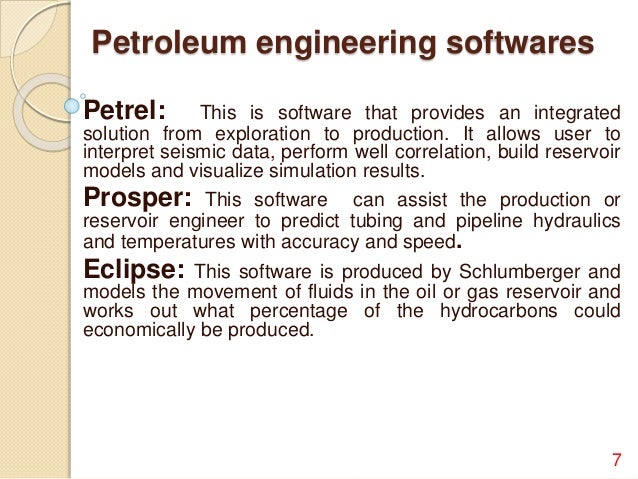Prosper Petroleum Software

Integrated Asset Modelling (or IAM) is the generic term used in the for computer modelling of both the and the of a field development. Historically the has always been modelled separately from the surface network and the facilities. In order to capture the interaction between those two or more standalone models, several time consuming iterations were required. For example, a change in the water breakthrough leads to a change in the deliverability of the surface network which in turn leads to a production acceleration or deceleration in the reservoir. In order to go through this lengthy process more quickly the industry has slowly been adopting a more integrated approach which captures the constraints imposed by the infrastructure on the network immediately.
Prosper Petroleum Software Download
Typical Components of an IAM. A pressure network. A subsurface saturation model.
An availability model. A constraint manager. A production optimisation algorithmSome but not all models also contain an economics and risk model component so that the IAM can be used for economic evaluation.IAM vs. IPM The term Integrated Asset Modeling was first used by British Petroleum (BP). Historically the terms Integrated Production Modeling and Integrated Asset Modeling have been used interchangeably. The modern use of Integrated Production Modeling was coined when Petroleum Experts, Ltd. Joined their MBAL modeling software with their GAP and Prosper modeling software to form an Integrated Production Model.Benefits of Integrated Asset Modelling Having an IAM built of an asset or future project offers several advantages;.
Faster runtimes which allow scenario analysis and. Insight in the interactions between various components of a development. An answer in economic rather than recovery terms (not always available)Difficulties of Integrated Asset Modelling By its very nature an IAM requires a multi disciplinary approach. Most companies are too compartmentalised for this to be easy, as a result of this an integrated approach has the following drawbacks;. More difficult to spot errors. Requires constant communication between various departments, ownership is either vague or too much part of one silo.The biggest barrier to adoption of IAM is frequently the resistance of reservoir engineers to any simplification of the subsurface. This argument is sometimes valid, sometimes not, see below.Appropriate use of IAM As with any other software because of the inherent limitations in any virtual model use of an IAM is only appropriate during various stages of a project life.

There are no hard and fast rules for this as there are a variety of software packages on the market which offer very accurate modelling of a very small scope to very rough modelling of a very large scope and anything in between. Currently the definition of IAM contains anything from daily optimisation to portfolio management.